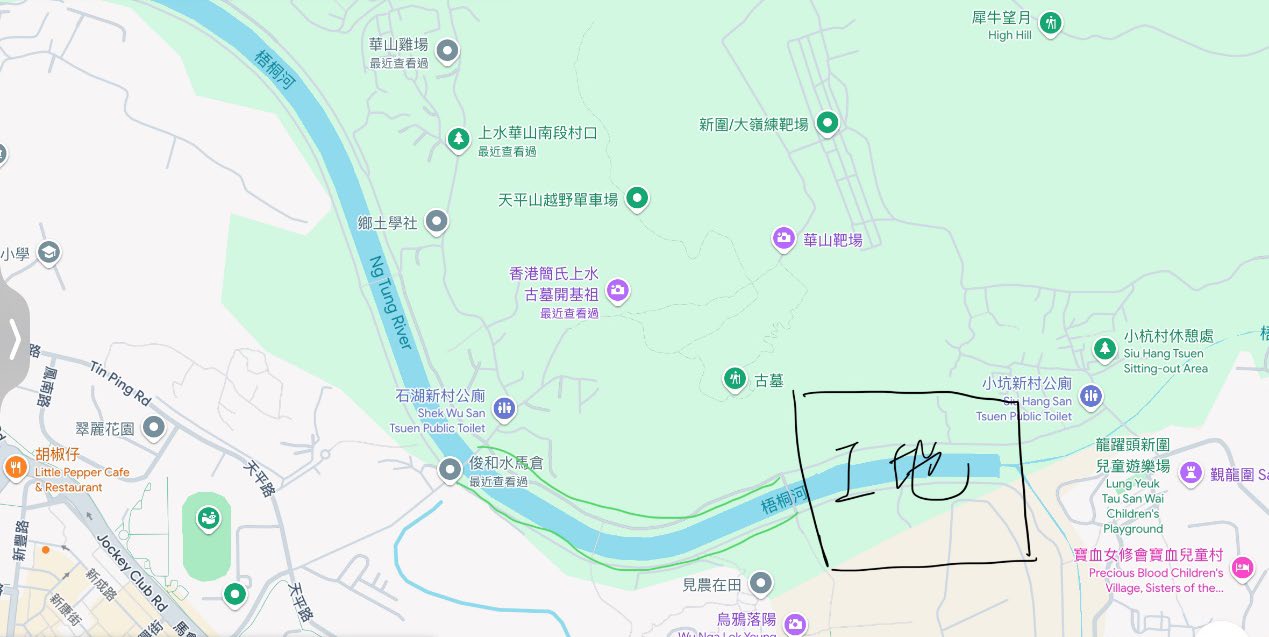Devour of the Urbanization
Introduction
The government announced the development of the Northern Metropolis, a suburbanization, to solve the inadequacy of housing and provide more job opportunities (Brand Hong Kong et al., 2022). Kwu Tung North and Fanling North (the area along Ng Tung River) are two of the new development areas of the Northern Metropolis. Some farmlands and wetlands provide shelters for migratory birds. There are also shelters for stray animals. The ecological value is highlighted.
However, the number of stray animals has increased because of land resumption. Animals are abandoned. As the construction continues, the environmental impacts in these two areas are contested.
Therefore, field recording was conducted three days in Kwu Tong North and along Ng Tung River. The peace and clamor of the environment were captured by causal listening and semantic listening. An auditory narrative is created by composing a soundscape based on the personal response to the environment.
Idea
This project auditorily narrates the present and future of the developing areas. It is started by the peace of nature and the life of the natural residents. However, the construction of suburbanization destroys the peace and brings clamor. From the residents ‘ perspective, the alarm warns of the destruction of the environment, like the end of the world. The scream of animals at the end implies the future of the animals living there.
Position of Sound
The position of sound provokes emotions and affects the perception of sound materials (Ekman and Kajastila, 2009, as cited in Wincott, Martin & Richards, 2021).
In the former of the audio, the cat movement is simulated by adjusting the sound position. It creates the vibrancy of the animals there. In the latter part of the audio, birds, and dogs barking are posited on the opposite side of the speakers, implying that urban development devours the environment. The contrast between pleasant and annoying sounds stimulates empathy and expresses disappointment to the certain areas.
Sonic journalism
This project reports the situation in Kwu Tung and Fanling North. Proving the truth is a significant element in Peter Cusack’s approach to sonic journalism (Fiebig, 2015). I become a reporter to collect and transfer information to the audience (Fiebig, 2015).
During the field recording, a resident living near the extensive construction site told me it was noisy every day. Noise pollution impacted the resident’s life. Moreover, many dump trucks were crossing the road. It posed the stray animals’ lives at risk. Besides, Long Valley Nature Park aimed to develop as the ‘green lung’ of the new district, providing an area for migratory birds to stay (Brand Hong Kong et al., 2022). However, as the construction continued, the nature park environment was disturbed by noise pollution. Ironically, noise reduction was neglected in a natural environment that was supposed to be conserved.
The environmental impacts become more evident when more construction continues. The future of the environment in Kwu Tung and Fanling North is foreseen.
Authenticity of sounds
Special sounds along the developing areas were captured to enhance the story’s content. Authentic sound makes people sympathetic towards the community (Butler, 2007). The screams of the animals were captured from the Sheung Shui Slaughterhouse, located along the Ng Tung River. The alarm sound was captured near the train rail along the Ng Tung River. The unique sounds allow the audience to feel empathetic to the situation.
Equipment used
Zoom H4n recorder with a stereo microphone: specific sounds Zoom H3VR recorder: Ambiance sounds
Path:
The green path was the path I walked along. The black part was the construction site.




Reference
Brand Hong Kong, Development Bureau & Civil Engineering and Development Department, 2022). Kwu Tung North & Fanling North are the new development areas. https://www.ktnfln-ndas.gov.hk/en/2-1-about_project.php.
Butler, T. (2006). A walk of art: the potential of the sound walk as practice in cultural geography. Social & Cultural Geography, 7(6), 889–908. https://doi.org/10.1080/14649360601055821
Cusack, P. (2016). Field Recording as Sonic Journalism. Faculty of Music, University of Oxford. https://ualresearchonline.arts.ac.uk/id/eprint/9451/
Wincott, A., Martin, J., & Richards, I. (2021). Telling stories in soundspace: Placement, embodiment and authority in immersive audio journalism. Radio Journal International Studies in Broadcast & Audio Media, 19(2), 253–270. https://doi.org/10.1386/rjao_00048_1
Fiebig, G. (2015). The Sonic Witness: On the Political Potential of Field Recordings in Acoustic art. Leonardo Music Journal, pp. 25, 14–16. https://doi.org/10.1162/lmj_a_00926